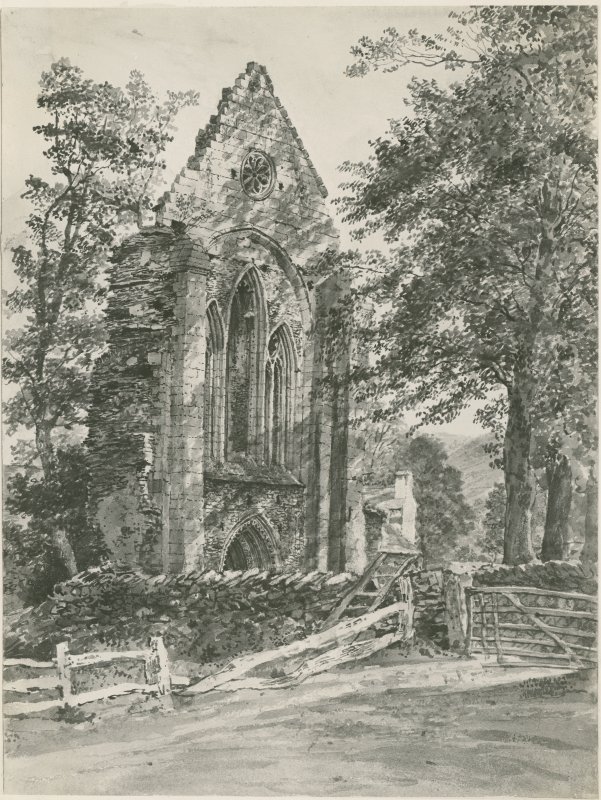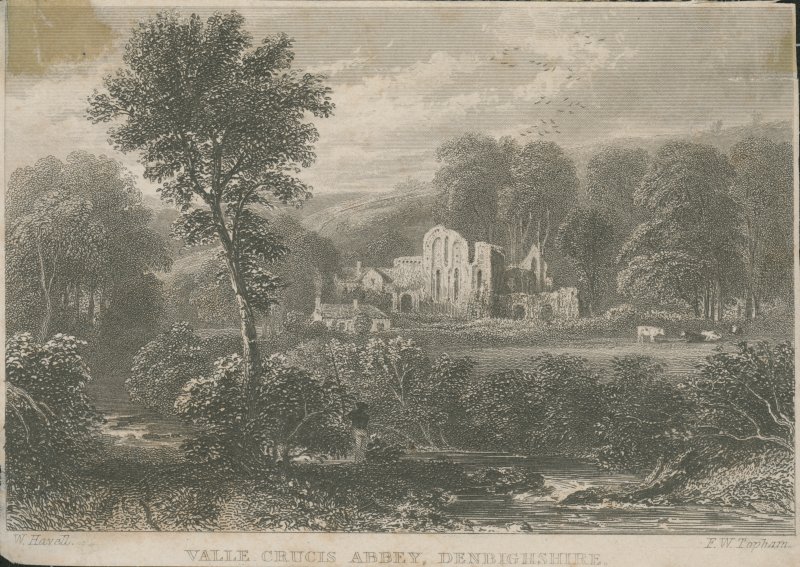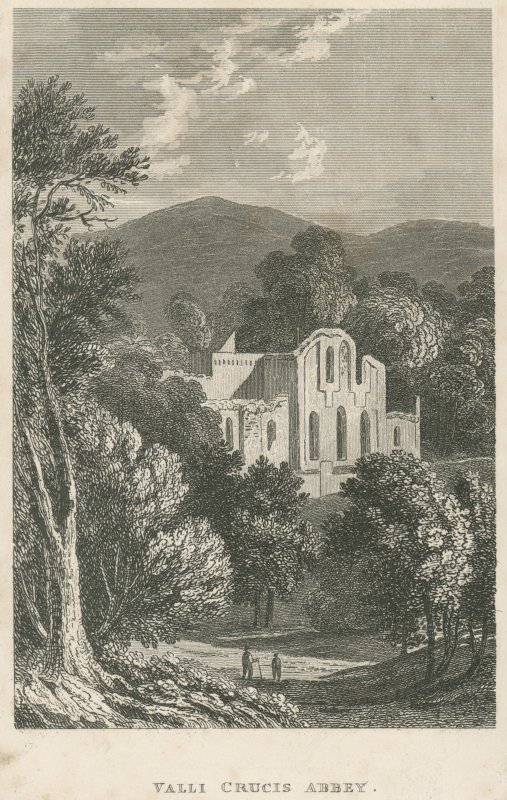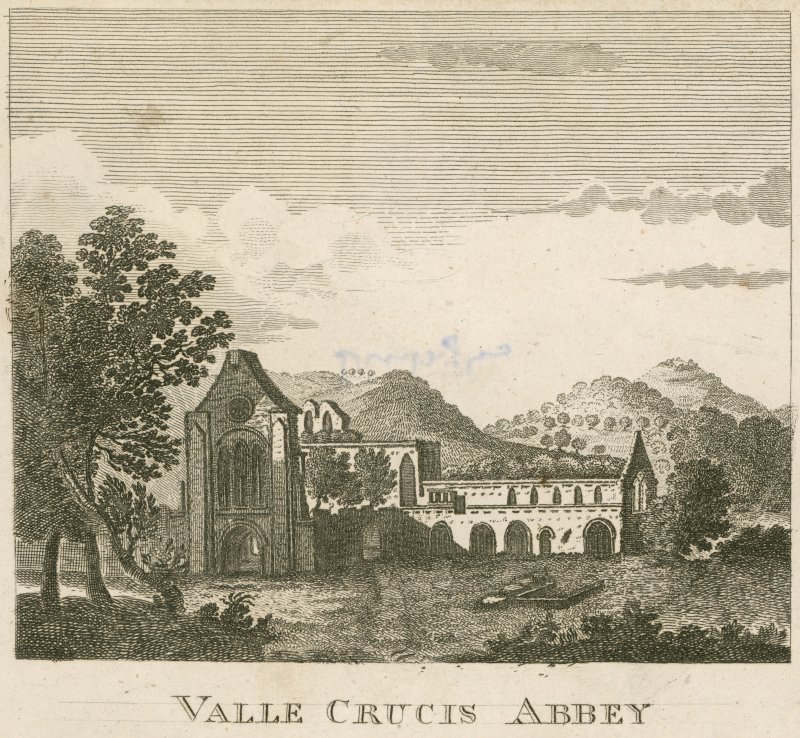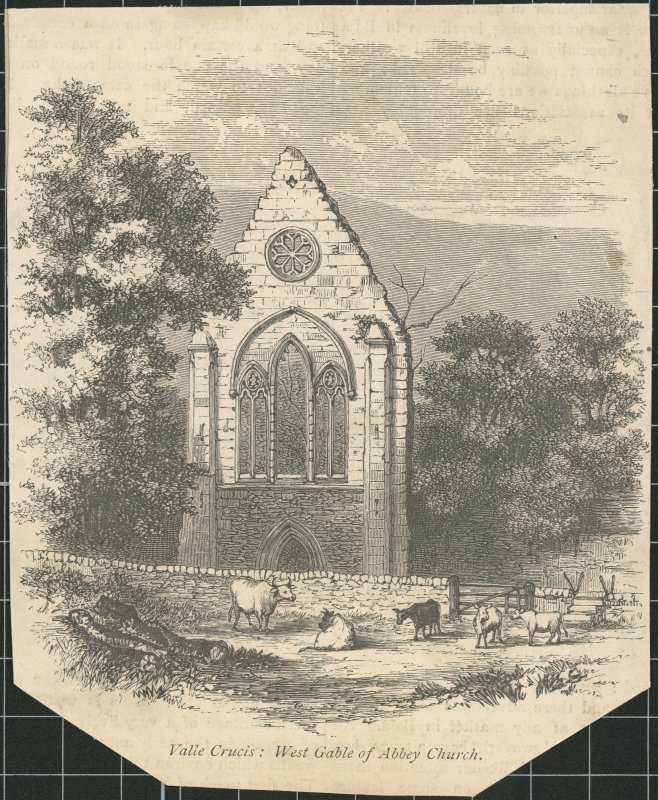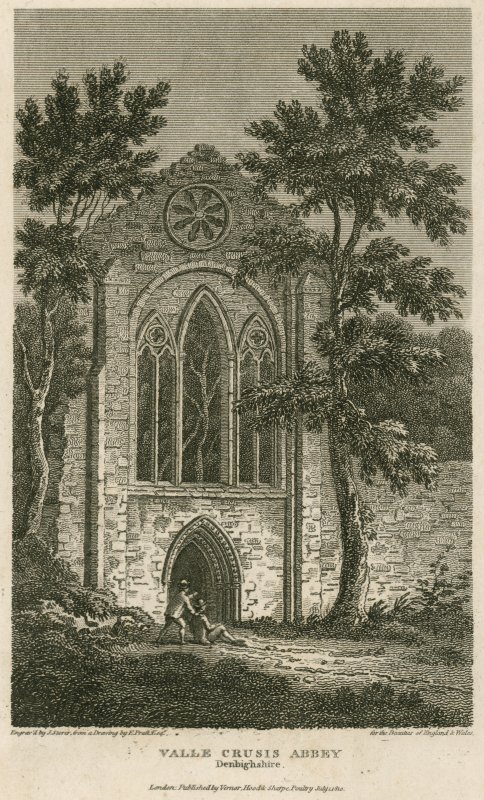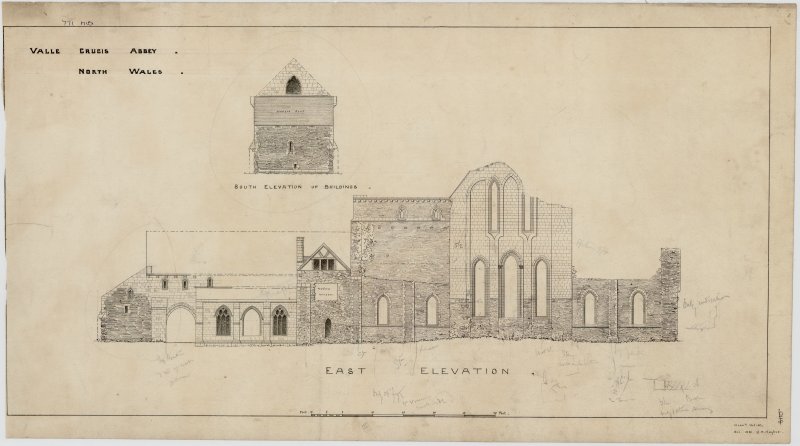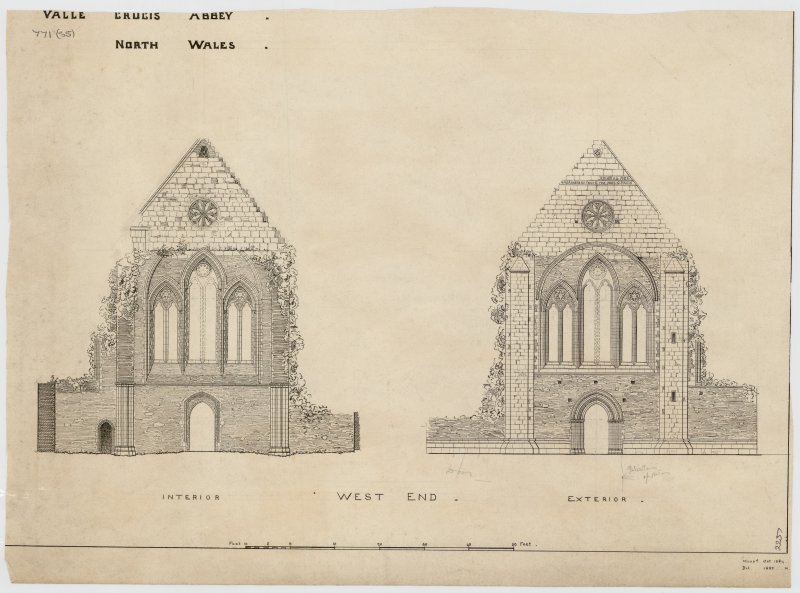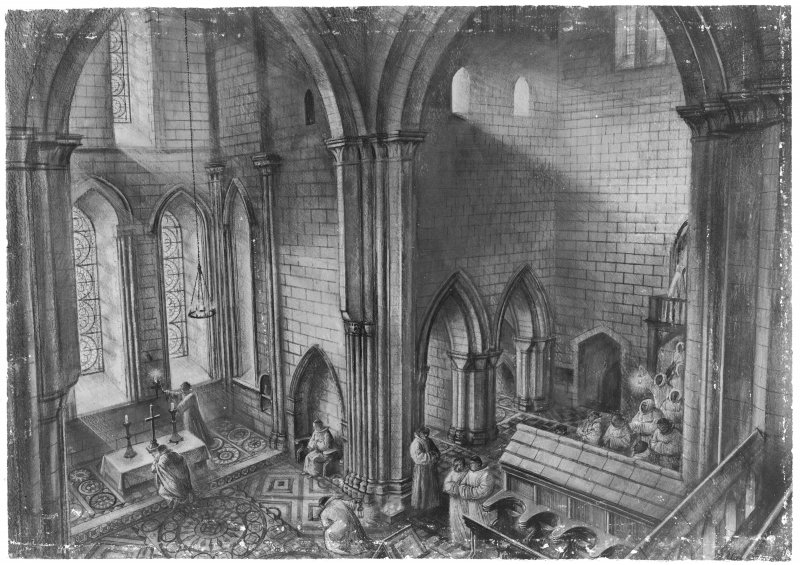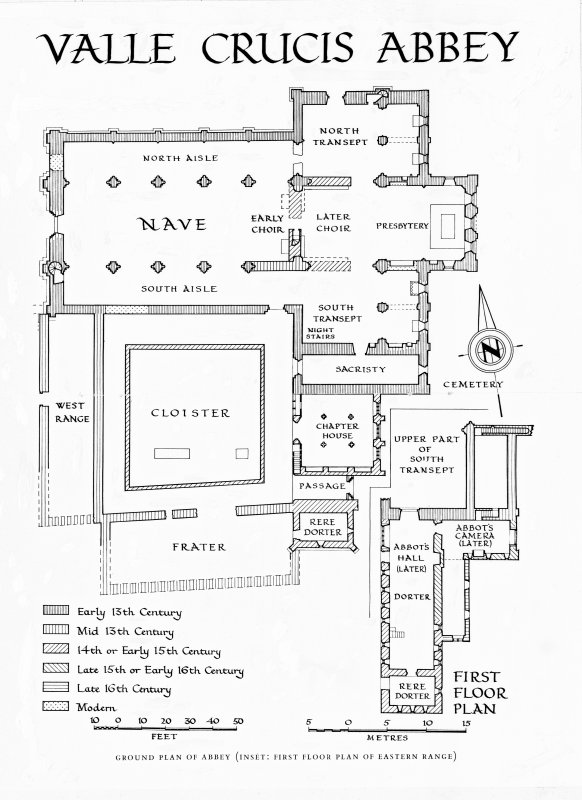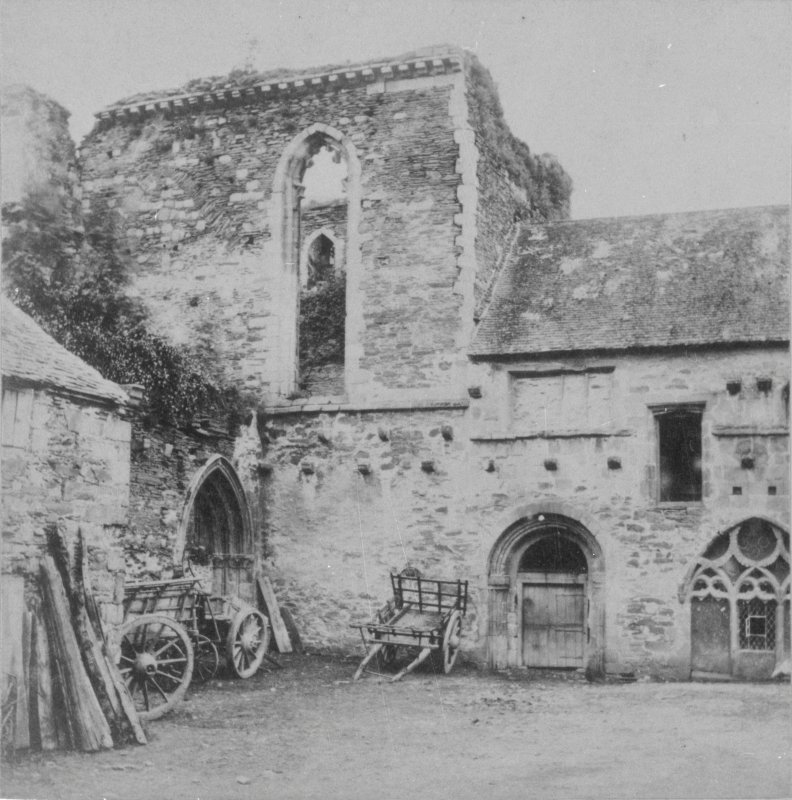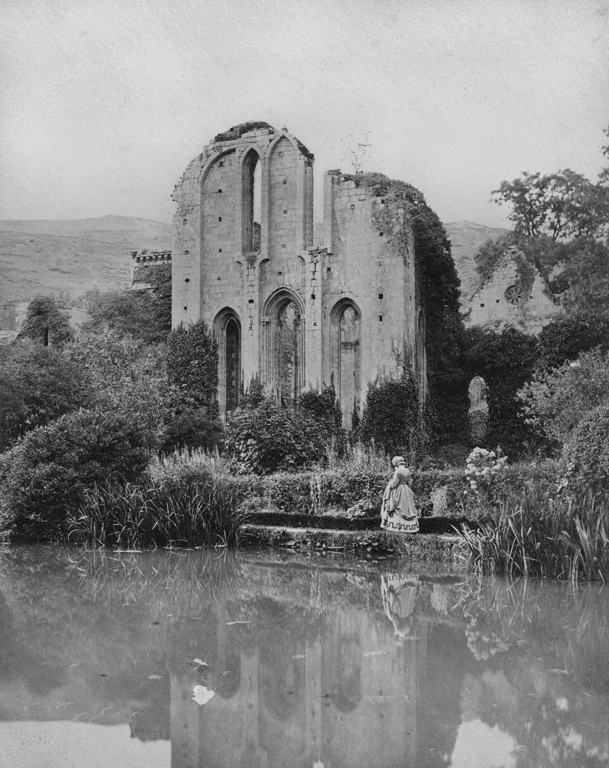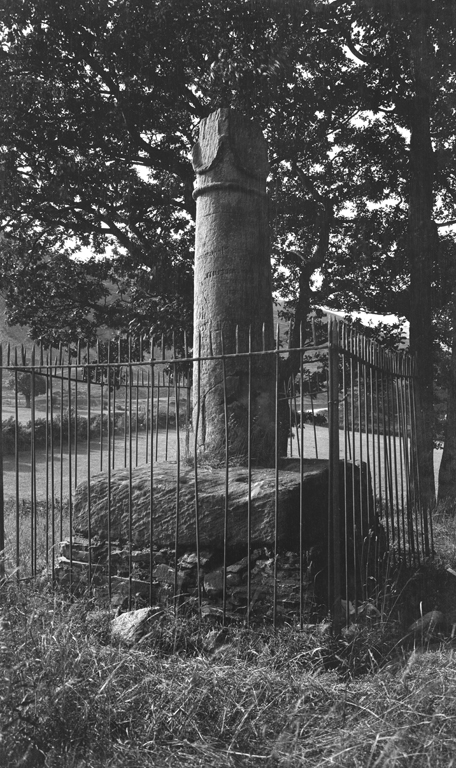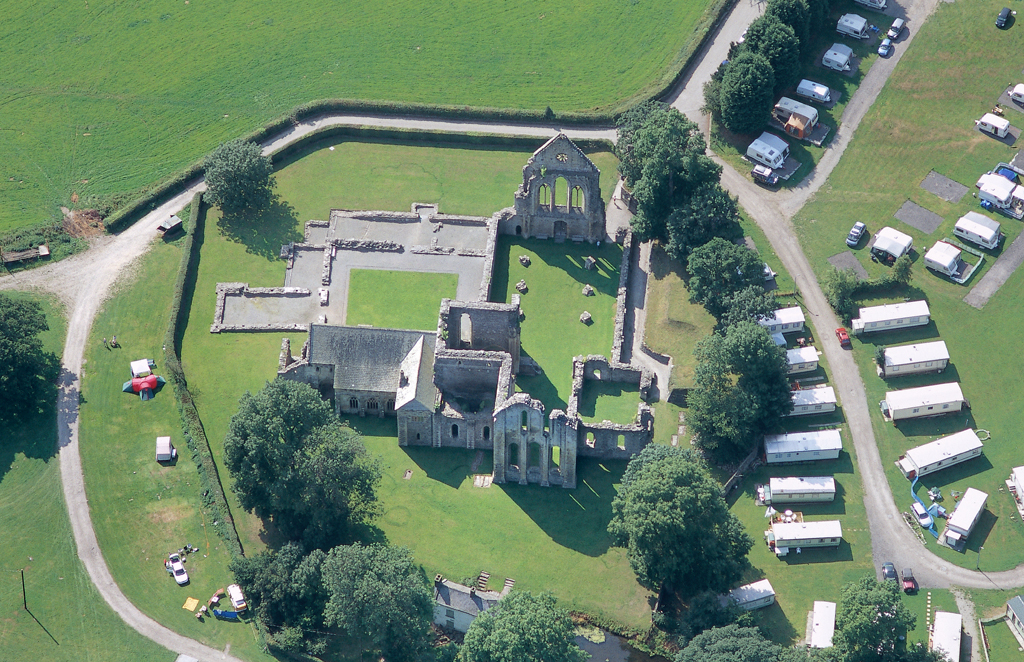Valle Crucis Abbey - Overview
The picturesque Cistercian abbey of Valle Crucis was founded in 1201 by Madog ap Gruffudd Maelor, the ruler of Powys Fadog and is situated 2km north of the town of Llangollen. The abbey suffered a fire in 1236 and an inscription high above the west window notes that this part of the building was completed by Abbot Adam (1330-44). During the second half of the fifteenth century, Valle Crucis was reputed for its scholarship, patronage of bards and its collection of Welsh literary manuscripts.
By the time of the dissolution of the monasteries in Britain, under the English King Henry VIII, in 1537, the abbey was already in decline. After the dissolution, the entire estate passed into the ownership of Sir William Pickering who had to strip the buildings of their valuable lead and hand it over to the Crown. This damage to the roof and extensive stone robbing caused Valle Crucis to fall into decay.
By the beginning of the eighteenth century, Valle Crucis had changed ownership multiple times before it was taken over by the Coed Helen estate. Despite the ruinous state of the buildings, the chapterhouse was converted into a farmhouse in 1800, and the former refectory was used as a barn. Many tourists who came to visit the picturesque remains during the Romantic period frequently complained about having to climb over dung heaps!
Archaeological excavations of Valle Crucis began in the 1850s and the site is now maintained by Cadw.
Accounts of Travel
Ein Herbst in Wales, 1856
Julius Rodenberg (1831 – 1914)
Die Fenster des Chores stehn noch hoch und schön da, von außen umwuchert sie die dichteste Fülle des Efeus. Im rechten Seitenschiff – man kann nemlich die einzelnen Theile der Kirche aus ihren Bruchstücken entziffern – sieht man noch die Kreuzbögen mit gar zierlichen Rosetten. Kein Beter kommt mehr in diese Kirche. Aber uralte Bäume im Efeukleide neigen ihre Häupter vor jedem Winde dessen, dem dieses Haus erbaut war und der es zerstört hat. Hinter den Mauern liegt ein freundliches Gärtchen mit Teich und Wasserfall unter Erlengebüsch; in einem weißen Häuschen, ganz mit Immergrün bekleidet, lebt Miss Lloyd ein stilles, beschauliches Leben. Sie führt die Fremden durch die Ruinen der Abtei. Ich habe mich gern mit ihr unterhalten und viel von ihr gelernt. Denn sie kannte die Sprache, die Poesie und Geschichte ihres Landes ganz genau. Valle Crucis Abbey (Abtei vom Kreuzthal), errichtet um 1200 und zerstört 1535, in der Zeit wo die Sitze des Katholicismus vor dem Feuereifer der Reformation zusammenstürzten, heißt so nach einem rohen Grabkreuz „der Pfeiler Elisegs“, welches auf einem alten Hügel in einer nicht fernen Haide Llwyn-y-Groes dem Andenken Eliseg’s, dessen Sohn Brochwel Ysgythrog in den Grenzkriegen gegen die Sachsen 607 bei Chester fiel, von seinem Urenkel Cyngen ab Cadell errichtet worden ist. Dieser Pfeiler Elisegs ist, wie man annimmt, das älteste Steinkreuz mit eingehauener Inschrift in ganz Britannien.
The windows of the choir still stand tall and beautiful and they are overgrown with the richest abundance of ivy. In the right isle – one can decipher the individual parts of the church from its fragments – one can still see the cross arches with their delicate rosettes. No one comes to pray in this church anymore. But ancient trees clad in ivy bow their heads with every breath of he, for whom this house was built and who destroyed it. Behind these walls lies a friendly small garden with a pond and waterfall below alder shrubs; in a little white house entirely covered by evergreens, Mrs Lloyd lives a quiet and contemplative life. She guides the visitors through the ruins of the abbey. I enjoyed her conversation and learnt a lot from her because she was thoroughly acquainted with the language, the poetry and history of her country. Valle Crucis Abbey (the Abbey of the Valley of the Cross), established around 1200 and destroyed in 1535, the time when the seats of Catholicism crumbled under the fiery zeal of the Reformation, is named after a rude cross, ‘the Pillar of Eliseg’. It was erected on an ancient mound situated not far on the Llwyn-y-Groes heath to the memory of Eliseg, whose son Brochwel Ysgythrog fell near Chester in the border wars against the Saxons in 607, by his great-grandson Cyngen ab Cadell. This Pillar of Eliseg is supposedly the oldest inscribed stone cross in the whole of Britain.
Reise durch England, Wales und Schottland im Jahre 1817, 1816
Samuel Heinrich Spiker (1786 – 1858)
Der Eintritt in das Thal selbst wird durch die Umgebungen desselben sehr reizend: hohe Berge, mit grünem Rasen überzogen, schließen es zu beiden Seiten ein, und Bäume aller Art stehen in malerischen Gruppen innerhalb desselben. Zwischen ihnen halb versteckt liegt die Valle-Crucis-Abtei, ein Gebäude, das durch die unzähligen Darstellungen desselben von den geschicktesten englischen Landschaftsmalern (seit Pennants Zeiten, der zuerst darauf aufmerksam machte) in England als eine der malerischsten Trümmer bekannt geworden ist. Am besten erhalten ist das Schiff der Kirche, mit den sich gegenüberstehenden großen Ost- und West-Fenstern. Das letztere besteht aus zwei Abtheilungen über einander, von denen die untere ein, die obere aber drei, durch dünne Pfeiler von einander abgesonderte, Fenster hat. Die Mauer selbst ist von kleineren Backsteinen gebaut, die Fenstereinfassungen aber von Sandstein, so wie auch die inneren Verzierungen, welche bei den oberen Fenstern noch vollständig erhalten sind. Das Ostfenster ist dem westlichen in Hinsicht der architektonischen Anordnung gleich, (mit der Ausnahme, daß unten drei Fenster und oben zwei kleinere sind) aber weniger gut erhalten, indem die inneren Fensterverzierungen sämmtlich fehlen. Die Ueberbleibsel der Bogen im Innern des Schiffs zeigen, daß dieß in dem rohesten sächsischen Stile erbaut war: die Pfeiler sind sehr stark und die Capitäler ganz in der Art ausgefüllt, wie man sie an den Bauwerken der früheren sächsischen Zeit sieht. Eine Thür, welche in die Abtei selbst führte, hat einen vollkommen runden, nach sächsischer Art verzierten Bogen. – Eine ganz eigenthümliche malerische Ansicht erhalten die Trümmer durch die hohen Eschen, welche sowohl im Schiffe der Kirche selbst, als außerhalb derselben, nahe bei dem Westfenster emporgewachsen sind, und die Trümmer in der Entfernung zwischen sich hindurchblicken lassen. Eben so nachtheilig, als diese Umgebungen vortheilhaft sind, ist der Gebrauch, den man von diesen herrlichen Ueberresten gemacht hat. Man hat nämlich die eigentliche Abtei, welche sich von dem Ostfenster nach Süden ausdehnt, in ein Wirthschaftsgebäude verwandelt, und Pferde- und Kuhställe an dieselbe herangebaut, so daß das Ganze jetzt einen viereckten, von Gebäuden umgebenen, Hof bildet, dessen nördlichen Flügel die Kirche macht, und über den man gehen muß, um von der Seite über Düngerhaufen hinweg in dieselbe zu gelangen.
The entrance into the vale itself is most delightful from the surrounding scenery. Lofty mountains, covered with a green sward enclose it on both sides, and within it are trees of all sorts disposed in the most picturesque groups. Half concealed amongst these trees appears the abbey of Valle Crucis, a building which from the numberless views of it by the ablest English landscape painters, since the time of Pennant (who first called the public notice towards it), has become celebrated as one of the most picturesque ruins in England. The nave of the church, with the large east and west windows opposite to each other are the parts most entire. The west window consists of two parts one above the other, of which the undermost has one, and the other forms three separate windows, divided from each other by slender pillars; the building itself is of small bricks, but the frames of the windows are of sand-stone, as are also the interior decorations, which in the upper windows are still in good preservation. The east window is like the west in regard to architectural plan, except that it forms three divisions below and two smaller ones above, but is not in such good preservation, as all the inside ornaments are gone. From the remains of the arches in the interior of the nave it is evident that it was built in the rudest style of Saxon architecture; the pillars are very strong, and the capitals finished exactly in the manner of the earliest Saxon edifices. A door in the abbey itself has a perfectly round arch, ornamented in the Saxon manner. These ruins have a peculiarly picturesque appearance from the ash trees which are growing both in the nave and on the outside near the west window, through which the ruins peep forth as we approach them. These noble remains are as much injured by the use which is made of them as they are improved by the surrounding scenery. The Abbey (properly so called), which extends from the eastern window southwards, has been converted into an inn, and stables for horses and cows have been built to it; so that at present the whole forms a square court, surrounded with buildings, the north wing of which consists of the church, and it is necessary to cross the square and stalk over dungheaps, in order to enter it.
(Travels through England, Wales and Scotland in the Year 1816. Vol 2. London: 1820)
Voyage d’un Français en Angleterre pendant les années 1810 et 1811, 1810
Louis Simond (1761 – 1831)
[L]a vallée de Llangollen (prononcée Llangothlen), plus renommée encore que sa voisine [c’est-à-dire la vallée de Clwyd]: elle nous a semblé plus profonde; nous y sommes descendus par une pente longue et rapide. Au plus bas, le long d’un clair ruisseau, sur un niveau gras, noir, fécond et ombragé, nous avons bientôt découvert, à notre gauche, les ruines de l’abbaye de Valle Crucis, et sur une hauteur sourcilleuse, perchés dans nes nuages, les murs, encore debout, du château de Dinas Bran ou des Corneilles, qui semble menacer cette paisible vallée, dont l’abbaye a l’air de jouir. De grands frênes croissent parmi les débris, et s’élèvent par-dessus les ruines gothiques de Valle Crucis, troncs, racines, et ruines, si intimement unis et entremêlés, que les pierres semblent en quelques endroits sortir du corps des arbres autant que les arbres des pierres. Quelques familles de paysans habitent encore ce qui reste du cloître; les vaches et les cochons, les poulets et les enfans gravissent et perchent parmi tout cela, et l’on voit une paire de cornes, une hure ou une petite tête mal peignée, se montrer ça et là à la fenêtre, au milieu des ciselures gothiques et du feuillage vert. Cromwell et le temps sont de grands paysagistes. Le ruisseau passait par la cuisine de cette grasse abbaye, et formait un vivier encore entier, et qui a du poisson.
Llangollen, of still greater renown than its neighbour [i.e. vale of Clwyd] although I do not think it deserves it so well; it appeared to us deeper than the Vale of Clwyd, and the descent on this side of the ridge steeper than the ascent had been. We soon came to a sheltered spot, where the ruins of Valle Crucis Abbey are seen in fat fields, level, rich, and low, with a clear stream traversing them, and the ancient fish-pond still entire. On the brow of a neighbouring hill, and threatening the valley, which the Abbey seemed to enjoy, appeared the walls of Dinas Brân, or Crow Castle. The area of Valle Crucis Abbey now encloses a grove of lofty ash trees, which overtop the ruins, and have a fine and anguilar effect; so interwoven are the roots and the ruins, that stones appear to grow out of the trees, as well as trees out of the stones. Some peasants have taken up their abode among the remains of the cloisters; cows and hogs, chickens and children, climb and perch on the trees and ruins, and you may see here a pair of horns, there a child’s head or a pig’s peeping through the windows, among Gothic carvings and green boughs. [Cromwell and the weather are great landscapers. The stream ran through the kitchen of this fat abbey, forming a fishpond that still exists in its entirety and which still carries fish today.]
(Journal of a Tour and Residence in Great Britain, during the Years 1810 to 1811, by a French Traveller: with Remarks on the Country, Its Arts, Literature, and Politics, and on the Manners and Customs of Its Inhabitants. Edinburgh: Printed by George Ramsay and Co., for Archibald Constable and Co, 1815)
"En Angleterre", c. 1880s
Marie-Anne de Bovet (1855 – 19??)
Autour de Llangollen abondent les buts d’excursion, particulièrement les cascades et cascatelles dont sont inondées les montagnes galloises, où l’eau de source, soit dit en passant, est à une température aussi voisine que possible de glace. L’abbaye de Valle Crucis, qu’il est d’obligation de visiter, consiste en un écroulement incohérent de ruines vaguement gothiques, entourées d’un cimetière vénérable où les dalles funéraires portent des inscriptions encore lisibles, mais absolument imprononcables. Ces noms effoyablement barbares sont encore aggravés par leur longueur prodigieuse – ainsi celui du saint patron de l’église de Llangollen: Collen ap Gwynog ap Clyddwg ap Cowrda ap Caradac Freichfras ap Llyr Merini ap Einion Yrth ap Cunedda Wlegdid. Tout près de la ville, au sommet d’une colline de schiste, achève de s’effondrer le château du Corbeau, encore imposant à distance. C’est là que la très belle princesse Myfanwy Fechan aima le barde Hoel ap Eeinion Llygliw.
Around Llangollen there is no shortage of excursion goals, particularly of waterfalls big and small that flood the Welsh mountains, where the temperature of the spring water, let it be said in passing, is close as can be to ice. The Valle Crucis Abbey, which must be visited, consists of an incoherent tumbling of vaguely Gothic ruins, surrounded by a venerable cemetary where the tomb stones bear inscriptions that are still legible, if totally unpronounceable. These frighfully barbaric names are compounded by their prodigious length – like that of the patron saint of the Llangollen Church: Collen ap Gwynog ap Clyddwg ap Cowrda ap Caradac Freichfras ap Llyr Merini ap Einion Yrth ap Cunedda Welgdid. Really close to the town, on top of a hill of shale, the Crow’s castle continues to disintigrate, still imposing from a distance. It was here that the very beautiful princess Myfanwy Fechan fell in love with the poet Hoel ap Eeinion Llygliw.

